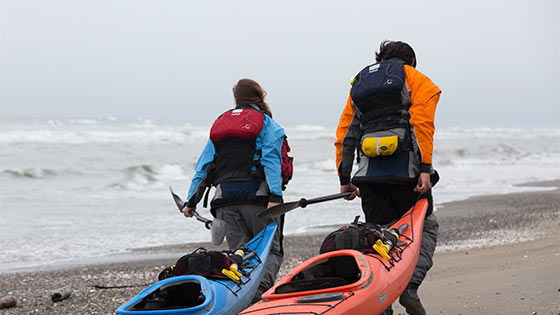Is Your Life Jacket Safe?
The U.S. Coast Guard sets standards that life jackets, or Personal Flotation Devices (PFDs), must meet in order to be sold with a Coast Guard Approval Number. In order to obtain that approval, manufacturers submit samples to a testing laboratory where they are required to pass a rigorous set of tests.

Underwriter Laboratories Incorporated (UL) is one such testing facility. You have probably seen the UL Seal of Approval (“UL” enclosed in a circle) on many consumer products. Here’s a typical list of tests required for a Type III PFD, the most common watersports category of life jackets:
- Donning and In-Water Performance (with 6 subjects in size XS, 12 subjects in each size S/M and L/XL)
- Dynamic Strength at 50 mph
- Water Retention (with maximum pocket area and minimum drainage)
- Flame with Tensile
- Body Tensile
- Zipper Tensile
- Shoulder Tensile
- Waist Belt Tensile
- Dimensional Spot Check
- Buoyancy and Distribution
- Hardware Secureness
- Pamphlet Strength of Attachment
- High- and Low-Temperature Test
- Seam Strength
The manufacturer has to submit multiple samples of the different sizes to the lab for the testing. Should a PFD fail any of the above tests, then it’s back to the drawing board to correct the problem and resubmit new samples for testing.
What’s more, after a model passes all the tests and receives its Coast Guard Approval Number, if the manufacturer decides to change any feature or material in the jacket, it has to go back through the testing process.

As you can see, getting a new PFD approved is a very time-consuming and expensive process. However, when you purchase a Coast Guard Approved PFD, you can be assured that it meets the highest safety standards. There are PFDs on the market that are not approved. Some may even say “not a life-saving device” on the inside. In Europe, many places don’t require certification. If they do call for regulation, it would probably be through CE certification, which is Europe’s version of UL. It’s expensive, slow and bureaucratic, with more paperwork but much less testing and lower standards.
Now, it’s up to you to perform the most important part of the whole process—and that’s to wear the PFD when you’re on the water!
Boat Often & Boat Safe
 NRS Gift Card: Always Fits, Always Wanted
NRS Gift Card: Always Fits, Always Wanted




